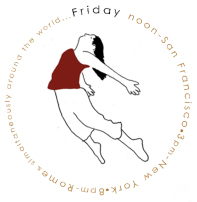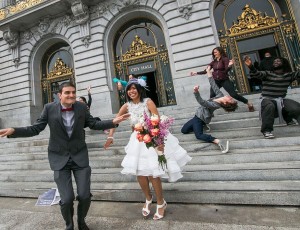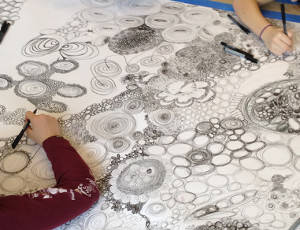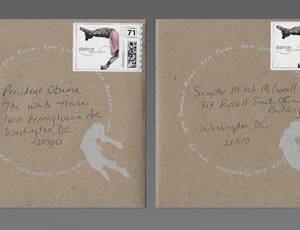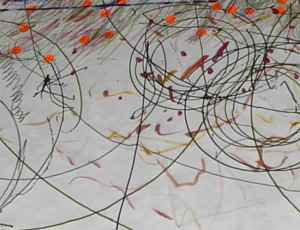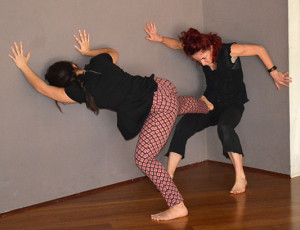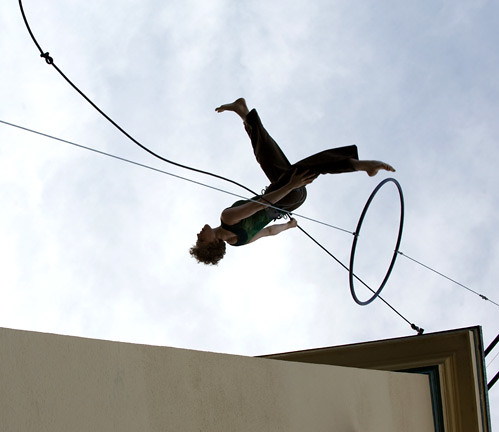
The arts have always been used to draw people into conversations that are not necessarily easy to have, “Niagara Falling” is no exception. This September, Fly Away Productions and Dancers’ Group/ONSITE bring forth issues of social justice through their new piece “Niagara Falling,” a performance choreographed by Jo Kreiter, Artistic Director for Fly Away Productions. Audiences will experience multi-layered video taken from San Francisco and Niagara Falls which exposes the stark realities we tend to ignore everyday: boarded up homes, people living on the street, and abandoned buildings decaying from neglect. This multimedia aerial performance explores America’s economic failings in hopes of inspiring viewers to create a positive change. At a time when the social disparities between classes has never been greater, Kreiter believes that this performance will help initiate some very important conversations amongst the public. Onlookers will also have the opportunity to see the amazing range and power of the human body as dancers are suspended in life jackets and a steel life boat.
Fly Away Productions takes dance to entirely new heights with performances taking place up to 200 feet off the ground. What inspired you to take your choreography to the skies?
For many years I danced with Joanna Haigood and learned via my experience as a principal dancer in her company how compelling it is to fly. Not just to fly but to fly inside an artistic landscape where flight is designed as a theatrical element to move a narrative forward.
In my own work now, I like to think that my dances live at the intersection of social justice and acrobatic spectacle, where flight is a fantastic tool to draw people in.
How do you begin to put a new piece together? What parts do movement, theme, and music play?
I love this question because I have recently been engaged with it via a CHIME Residency with Elizabeth Streb. Elizabeth asked each participant in the Chime workshop to create an organizational chart of how we value movement and how we design our work. For me, work begins with a political or social issue. Something that bothers me that I cannot look away from. From there I find the site and/or the kinds of objects that resonate with that issue. And then, with my dancers as collaborators, we invent a movement vocabulary that activates the objects (or site) and that speaks, via image and the content inherent to movement. This process also engages a rigger and a lot of rigging design to take what is imagined and make it possible. Then I layer in music. Every large scale dance I have made features original music by a female composer. I am really proud to commission women composers over the last 17 years, as their visibility is less than their male counterparts.
What sorts of challenges do you face using an apparatus, and how have these challenges affected or enhanced your choreography?
Apparatus creates opportunity and it also creates limitations. Right now we are dancing in a steel framed lifeboat. The boat is 12 feet long so it is a large, dominant object. We have to work hard to come up with a vocabulary that resonates, that is not so acrobatically cumbersome that it holds no meaning, and that can be activated within the budgetary limitations we are working with on any given project. In Cirque Du Soleil, I have seen apparatus fly in and fly out on beautifully motorized truss. To date I do not have the luxury of engineering sets at that level. I can only hope I might one day.
So for me apparatus allows for the creation of innovative moves. I love that. But it disallows other kinds of moves. We try to find the essence of each object we work with, meaning we try to bring it to life in the most artful and imaginative way that we can muster. With apparatus I value both risk and fluidity. I try to find the balance.
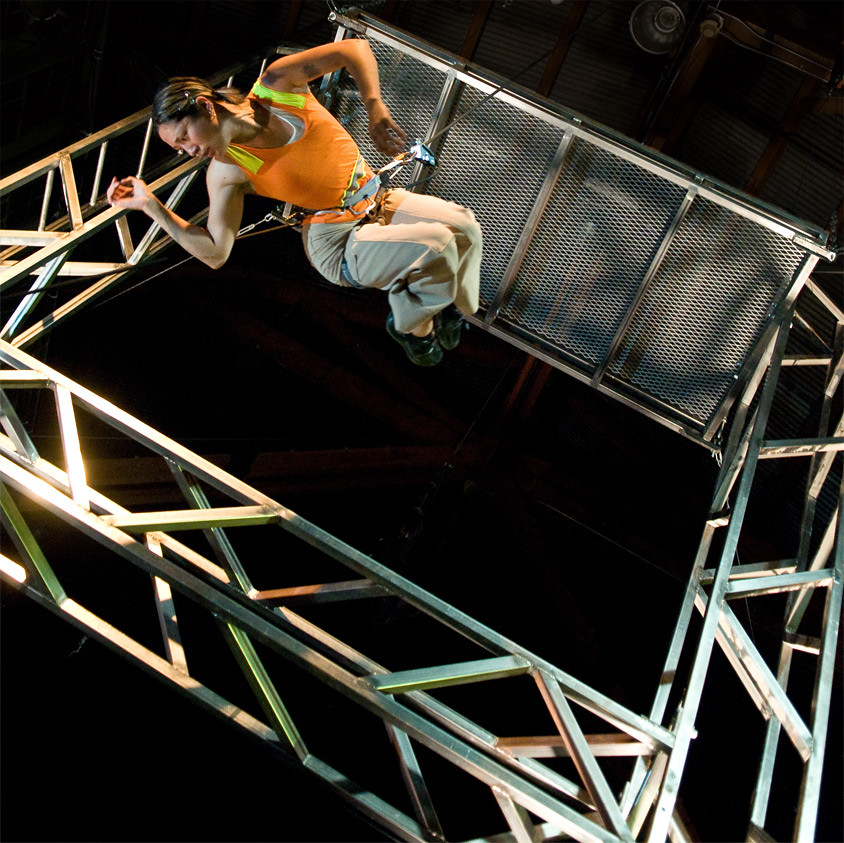
Photo by Austin Forbord
“Niagara Falling” incorporates aerial dancing and multimedia, in what ways do you think this combination will change the way audiences will react to the performance?
I don’t really think about changing the way an audience will react. For the past several years I have used oral histories via recorded voice. Working with film has allowed me to expand the oral history terrain to include voice and image at the same time. For Niagara Falling we are working with a very documentary style of film. It is a style that most audiences are familiar with. So I think they may be comfortable with the form of film we are choosing, but the integration with dance on a wall will add a new dimension, and one that is less familiar to most people. I look forward to hearing from audiences about how they experience the dance and film component of this piece of public art.
What do you hope to achieve by combining politics and dance?
I think art can succeed in inspiring political change where civic processes have failed. For example our banks and financial institutions have failed us as a society, as they have not created a greater good, but rather a venomous wrath of ongoing self interest. It is really interesting to me that that same weekend of Niagara Falling, Keith Hennessey and Circa Zero are performing a piece called Turbulence: a dance about the economy at Yerba Buena. I believe that both pieces source from the same impetus, which is economic failing we have all been living through.
I think art can be a part of moving people to instigate change. Art – whether it is a film, a book, a play, a graphic novel or dance on a wall – comes at you sideways. It is not a legal document or a convoluted piece of bureaucracy. It has breath, beauty and hopefully a soul.
Why do you think it is important to make dance accessible to everyone?
We live in a society, and we live in a city, that is increasingly steeped in class differences. There is a greater concentration of wealth in the hands of fewer people than there has ever been. It is this context that spurs me to value accessibility with my dance making.
Fly Away Productions’ world premiere of “Niagara Falling” can be seen in San Francisco on the west wall of the Renoir Hotel on 7th Street @ Market, from Sept 26-29, 2012. Two 30 minute performances will be held at 8:30pm and at 9:30pm.
For more information about Fly Away Productions, and to view future performances visit: flyawayproductions.com
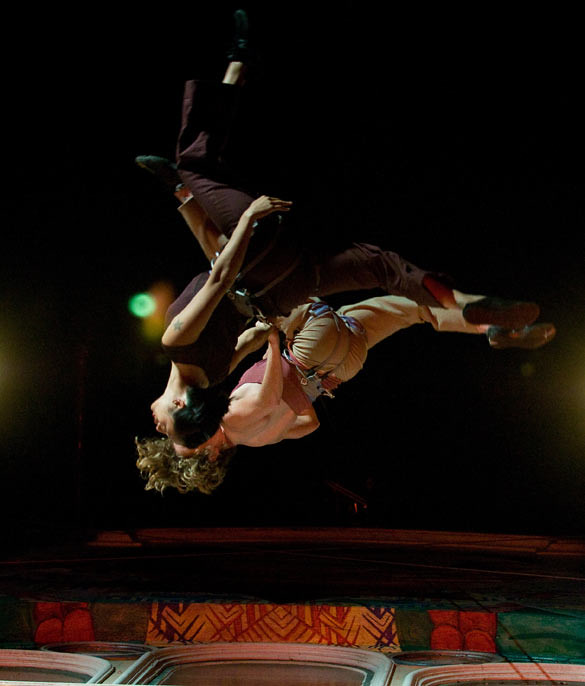
Photo by Austin Forbord

 Sign In
Sign In